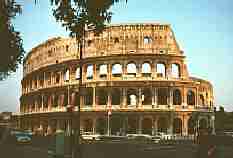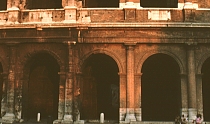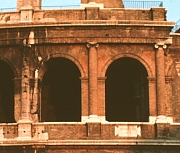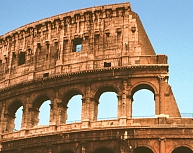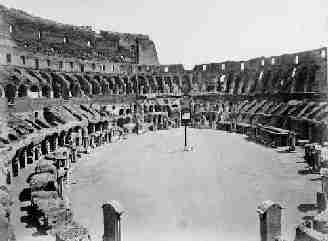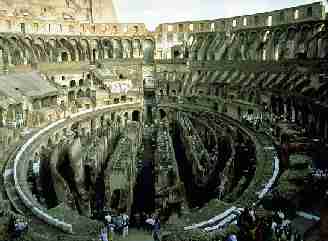| Layout & Architecture | ||
| Home
One of the main entrances http://www.bluffton.edu/~sullivanm/ romancolosseum/mainentrance.jpg |
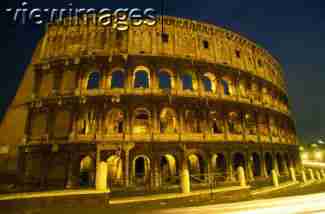
http://multimedia.lycos.com/ (Filename: AA000858.jpg Photographer: David Buffington) http://www.bluffton.edu/~sullivanm/romancolosseum/romancolosseum.html
The Colosseum was the largest amphitheater of the time period. It was a huge elliptical structure consisting of four stories, over 150 feet high. It measured 620 X 513 feet. The enclosed oval arena measure 287 feet long X 180 feet wide. Around the arena was a high, protective wall, behind which was a marble terrace. Ringside boxes were built within the terrace for respected persons such as the emperor, the Pontifex Maximus, and the Vestal Virgins. Above the ringside boxes were rows of marble seats divided into sections: one section for private citizens, the second for the middle class, the third for slaves and foreigners and the fourth for women and the poor. On the roof, sailors were recruited to manage the Velarium, an awning that protected the audience from the sun and rain. Overall, the Colosseum was a tremendous feat of Roman architecture and engineering. The main material used for the building was travertine, a limestone found near Tivoli. The architects used travertine blocks to build a skeleton framework of piers and arches. The travertine rings were then linked using a series of lateral walls made of various materials including brick, concrete, and volcanic stone. Each story head different types of columns--the first was Doric, the second Ionic, and the third Corinthian. The fourth story had Corinthian pilasters as well as windows which lit the passage located behind the gallery. Statues decorated the facade, often found between the columns, and under the archways. From left to right: the first floor, second floor and third and fourth floors. http://www.bluffton.edu/~sullivanm/romancolosseum/romancolosseum.html Beneath the arena was a labyrinth of lightless cells and rooms which housed prisoners and beasts condemned to die, as well as a system of elevators that raised them as their turns came. From left to right: 1890-Before excavation of arena floor, and current day after excavation. (First picture: http://www.chch.school.nz/mbc/colosseu.htm) (Second picture: http://harpy.uccs.edu/roman/colosflo.jpg) There were approximately eighty entrances and often wedges of seats were purchased by groups (which were designated by an inscription) or communities of people. These pages were complied by the following students of the University of Akron: Matt Clore (Senior), Heather Graham (Sophomore) and Courtney Mullen (Junior)
|

